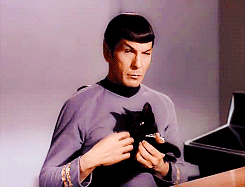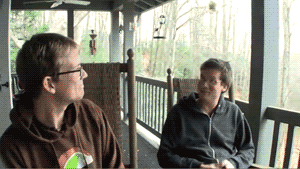These articles were a welcome contrast to those from last week! While brief, they were informative and written with enthusiasm by the authors. They described moving forward with current technology, using and improving our tools in order to meet patron needs. Moreover they did not fill me with either frustration or rage, but rather excitement and cheeriness. The steps taken by the team at Wichita State University (WSU) even made me set aside my own personal prejudices (go Jayhawks!) and admire their resourcefulness. I wish they’d talked more about the assembled team that tackled the task, but I understand that the article was about the creation of the customized interfaces rather than the skills of the creators.
In Lown’s article, the idea of having a ‘Bento Box’ display allowed the librarians some control over the amount of information provided to patrons - not in such a way as to restrict it, but so as to arrange the information in order to make it easier to digest and choose the desired format. Often patrons are looking for a specific type of material — peer-reviewed articles, print books, an electronic resource — and creating designated areas to distinguish them rather than stuffing them together in a single, unified list makes the site more usable. After spending some time with the NCSU Search, it cuts out several steps that students would otherwise have to do, saving several clicks as well as time for the user.
One thing that hasn’t been addressed much in either of the articles (although it was briefly mentioned by Deng) is the process of building a dialogue between the faculty and librarians so that a desire for change can be expressed and acted on. Deng notes that one “trend in web services is to allow personalization of user interfaces” (2010), and while in Web 2.0 there are forums of communication to learn what users want and view their activity, in libraries this isn’t yet the case due to things such as respect for patron privacy and restricted budgets. When Facebook first launched, it was primarily for people with a “.edu” email, and I believe that it had the potential to be a forum for this type of feedback and information. Over time it opened to the general public and permitted other types of emails, becoming an open network rather than one which catered exclusively to higher education. As libraries don’t necessarily have a Web 2.0 platform with which to interact with their patrons directly, they must use more primitive tools such as actual, “irl” relationships between departments to foster feedback.
Building these connections comes before the technology, before the planning. Relationships create the desire to act, and in the case of WSU it created a desire to act on the needs of the faculty to create individual portals and search pages. Libraries have varying hierarchies, so sometimes the subject librarians work as liaisons and other times there is more outreach or built-in feedback. For distance education programs there can even be course librarians who are dedicated to assisting faculty to set up their classes with rich media and appropriate materials. In the case of WSU, it appears that their collaboration sprung from having a reading collection written by faculty and local authors which had records which contained local notes. In short, it came from an effort by the university to draw attention to both its collection and its faculty. This type of support is, to put it frankly, pretty neat. The library then figured out how to use data they already had to improve access. No backpedalling or additional notes needed due to solid cataloging and precise notations. After the library was able to use the records for a faculty showcase, other programs saw the need for customized interfaces and were able to request them.
Part of what makes this “pretty neat” is that the library inadvertently created demand for their own collection. This was an unknown service, one the library didn’t know they could do until they tried and one that the programs didn’t know they could ask for. Once it was complete, everyone was better off! Students had more relevant information, programs had customized portals to link to, and the library was able to provide a valuable service. This kind of collaboration creates better communication between faculty and librarians, and could conceivably help with consultations and collection development in the future! I hope to see some future reports on this project as I’m curious as to how it’s impacted use of library materials in specialized classes and research.
When I read articles like the ones from this week, I get a lot of hope. When new technology is implemented, everyone grumbles for a while, but these librarians got past the grumbles and made the best of the technology. Want to do more with what we currently have? Let’s have a brainstorming session and think out of the box. Doesn’t fit our needs now? That's okay. It will! Oh yes, it will.
Works mentioned:
Deng, S. (2010). Beyond the OPAC: creating different interfaces for specialized collections in an ILS system. OCLC Systems & Services: International digital library perspectives, 26(4). p. 253-262.
Lown, C., Sierra, T, and Boyer, J. (2013). How users search the library from a single search box. College & Research Libraries. http://crl.acrl.org/content/74/3/227.full.pdf+html







